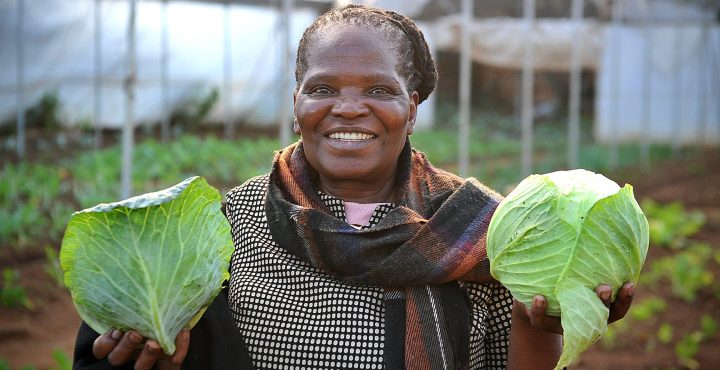CLIMATE RESILIENCE OP-ED
How not to do climate change adaptation — the sad case of the Bertrams Inner City Farm

The thriving — or destruction — of one solitary urban farm is a relative blip in our overall trajectory to a climate-resilient country. But the destruction of the Bertrams Inner City Farm highlights deep concerns about our holistic response to the climate crisis.
Last month, the City of Johannesburg demolished the Bertrams Inner City Farm — a thriving centre of organic food growing and youth skills development. A place that inspired the community and provided nutritious food for many who needed it, including for nearby crèches.
The reason: to make way for — to use the words on the City of Joburg’s website — a “shiny” and “environmentally-conscious” multi-purpose centre that purports to have a lower carbon footprint as a central concern.
While this decision, and how it was carried out, is questionable on a number of grounds, one issue is the wisdom of this action, or ones like it, given the climate crisis that is already battering our land, society and economy. As usual, the most vulnerable in society are impacted most strongly. We can see examples of this in both the recent KZN floods and Cape Town’s Day Zero drought, both events having been scientifically found to have, at the very least, been intensified as a result of climate change.
The need for climate resilience
South Africa is a climate change “hot spot” with our own government recognising the scientific findings that we are warming at twice the global average rate. The UN Intergovernmental Panel on Climate Change (IPCC) in its sixth assessment report confirms that we are in for intensified droughts, heatwaves, flooding, wildfire risk and extreme weather events. These changes increase the risk to food and water security, health, human settlements, infrastructure and natural and economic ecosystems.
In parallel, the urgent need to decarbonise will affect how we live and go about our business. The imperative to urgently phase out the use of fossil fuels is becoming more pressing by the day, and this means we have to rethink how we generate and use energy, transport goods and people, grow our food and manage water resources.
Importantly, the science is clear that we will have to adapt to and live with the impacts of climate change — some of which are now unavoidable. In other words — climate change is here to stay and its impacts will intensify.
Ensuring climate resilience requires an all-hands-on-deck approach, with all tiers and sectors of government, the private sector and communities undertaking the necessary transition to reduce carbon footprints and adapt to existing and future climate impacts.
Some of these measures are so-called big-ticket items — transforming the energy supply system, spatial planning, infrastructure protection and sea-level rise response. But importantly, climate resilience is also fostered at local levels and in a myriad of small-scale and careful ways.
What was climate resilient about the farm?
The Bertrams farm was a rare green space in a highly urbanised environment. A space in which soil regeneration was a key focus. This creates a water table replenishment opportunity, creates all-important topsoil (necessary for food production and an effective carbon sink) and bolsters biodiversity.
Climate change impacts are aggravating an already-ailing economy, and skills development provides opportunities for learners and young people to support vulnerable communities elsewhere, or derive an income while putting these skills to use.
The IPCC sixth assessment report says that “urban agriculture is identified as offering multiple benefits such as mitigating emissions associated with food transportation from rural to urban areas, improving food and nutritional security, strengthening local livelihoods and economic development, improved microclimate, soil conservation, improved water and nutrient recycling, efficient water management.”
To put it very simply, the farm was doing all of these, displaying sound climate response both in the form of adaptation and mitigation, arguably the epitome of sound climate resilience.
And the ‘shiny’ multi-purpose centre?
The farm’s intended replacement has many laudable objectives — senior citizen support, women’s empowerment, childcare and skills development. The success of these will depend on who conceptualises and operates these services, and this success is unfortunately not guaranteed — whereas the success of the farm in providing many very similar services was proven over 16 years.
Problematic too, is the economic model of perpetually developing new large-scale buildings. Cement, glass, steel and construction methods are carbon-intensive. And in this case, even if the proposed centre utilises the greenest building methods and materials, there will almost certainly be a substantial net-negative effect when compared to leaving the farm to thrive.
We need to focus on the repurposing and refurbishment of existing buildings — particularly given that there are many derelict and disused ones in certain of our urban areas.
The IPCC essentially defines “maladaptation” as a climate change adaptation measure that will have an unintended adverse impact on climate risk management, arguably what the City has done in this case.
Climate resilience is in our policies, but not our practices
The 2011 National Climate Change Response White Paper, arguably the blueprint for South Africa’s climate change response policies and measures, centres climate resilience as a core principle. It goes on to acknowledge that climate resilience in the context of urban social-ecological systems needs to be addressed. In other words, how do we live constructively and sustainably with natural ecosystems, even in a highly urbanised environment?
The 2019 National Climate Change Adaptation Strategy highlights, as an action, the “promotion of urban agriculture, including community and household food gardens, in areas not classified as agricultural. Growing food will help to reduce the potential food security risks associated with changes in climate. Particular efforts will be made to engage women from vulnerable households in these initiatives”. It is hard to imagine a more perfect congruence between the farm, as it was, and this policy measure.
South Africa’s Climate Change Bill tabled in February this year, a version of which will hopefully soon become our Climate Change Act, is tasked with governing the country’s climate change response. Many of its objectives are laudable, including the intention to “provide for the effective management of inevitable climate change impacts by enhancing adaptive capacity, strengthening resilience and reducing vulnerability to climate change, with a view to building social, economic and environmental resilience.”
The effectiveness of the provisions in the bill are unfortunately not as reassuring. Municipalities are required to submit climate response implementation plans only a full five years after the act comes into operation. There is also no provision for these plans to be substantively evaluated for effectiveness.
Additionally, the bill, which has integrated climate response as a core function, does not adequately provide for technical and financial resources to be made available to local government so that decision-making about matters such as this is sound and in alignment with national climate response strategy and the best available science.
Perhaps most tragically, Johannesburg’s 2021 Climate Action Plan explicitly recognises the need to ensure food security by, among other, promoting and facilitating urban food growing initiatives. The plan references the city’s food resilience unit intended to enable “food-insecure urban communities across the city to grow their own food”.
The plan goes on to urge “that along with making food gardens more attractive to young people, youth and communities also need to be enabled to participate more fully in these programmes”. This was all happening at the Bertrams farm.
What failed?
The thriving, or destruction, of one solitary urban farm is going to be a relative blip in our overall trajectory to a climate resilient country. But the event highlights deep concerns about our holistic response to the climate crisis.
Did the decision-makers, in this case, know about the needs and dictates of sound climate change response? Are their mandates formulated according to sound science? Why did the relatively progressive Climate Action Plan of the city not get followed? Why are different organs of state pulling in different directions? And most pertinently, why is the climate crisis not at the very top of the list of considerations for government decision-making? Even, if not especially, at local level.
One urban farm will not make the difference between a successful climate change response and a catastrophe. But replicating the urban farm model, building on the experiences and lessons learned, and facilitating more of the same — small scale, but at scale — may very well make a key difference.
The bottom line is that we don’t have the capacity — ecologically or economically — to tear down what’s working in the hope of building back bigger and better.
Rather we need to nurture the relatively rare green shoots that we do see, and build on those. We are running out of time. OBP/DM
Brandon Abdinor is a climate advocacy lawyer at the Centre for Environmental Rights, a partner organisation, along with groundWork and Earthlife Africa Johannesburg, in the Life After Coal Campaign.
[hearken id=”daily-maverick/9419″]





















 Become an Insider
Become an Insider
Comments - Please login in order to comment.